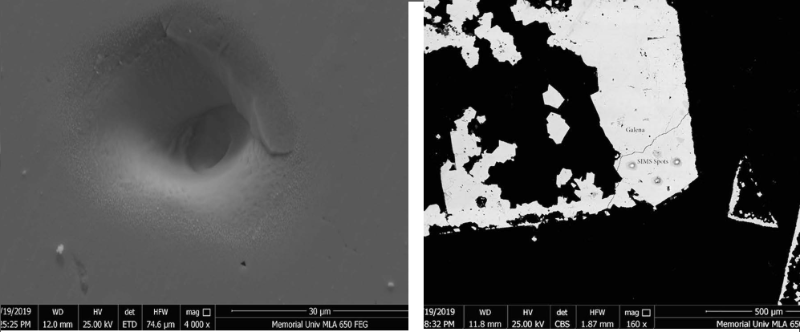Secondary Ion Mass Spectrometry

Secondary Ion Mass Spectrometry (SIMS) relies on the physical phenomenon of “sputtering” to produce analyte ions. A primary beam of ions (generally O- or Cs+) is accelerated into a solid sample at potentials of a few kV. The impact of these primary ions gradually erodes (“sputters”) a shallow crater in the sample. A portion of the material sputtered from the sample emerges as ions, and these “secondary” ions are the analyte species that are introduced into the mass spectrometer. All instruments routinely used for geochemical research today use finely focused microbeams of primary ions, and are thus commonly referred to as “Ion Microprobes”.
Ion microprobes are capable of both isotopic ratio analysis and sub-ppm elemental analysis – both with extremely high spatial resolution.